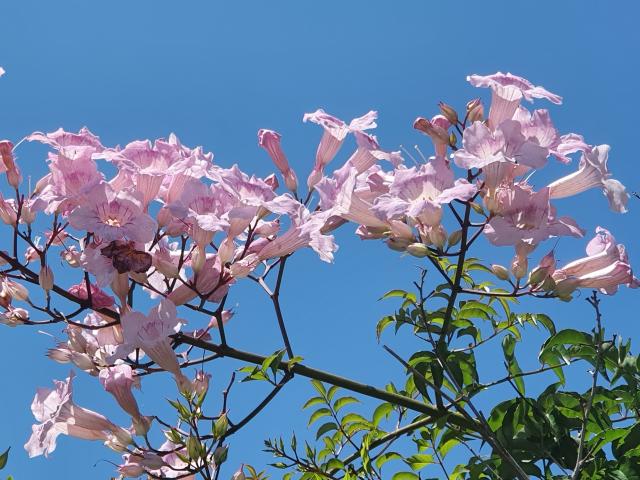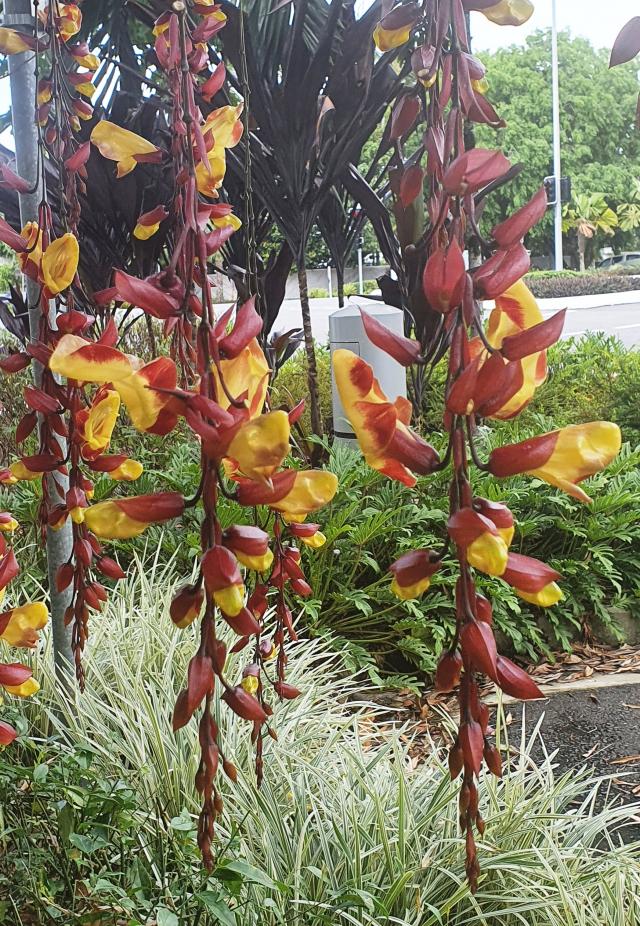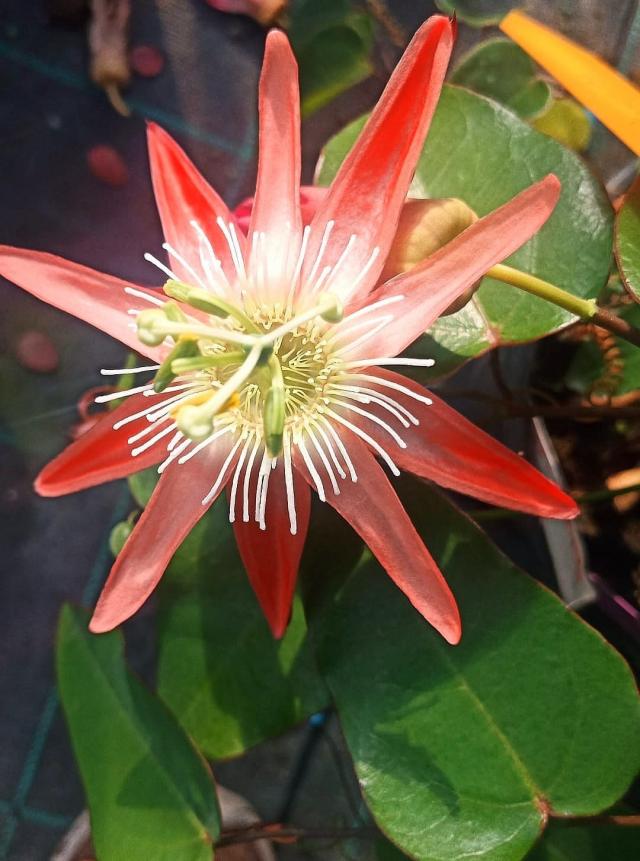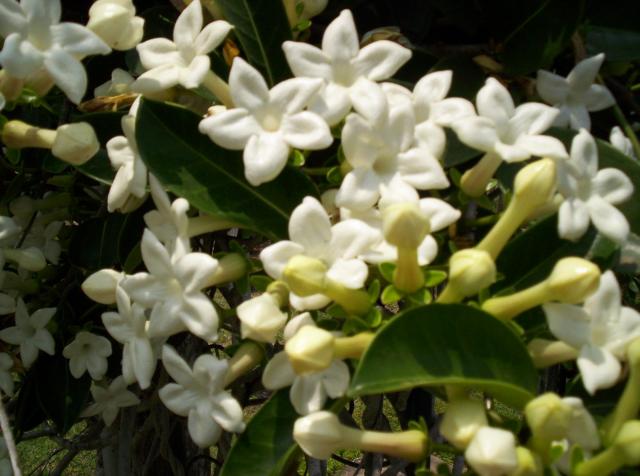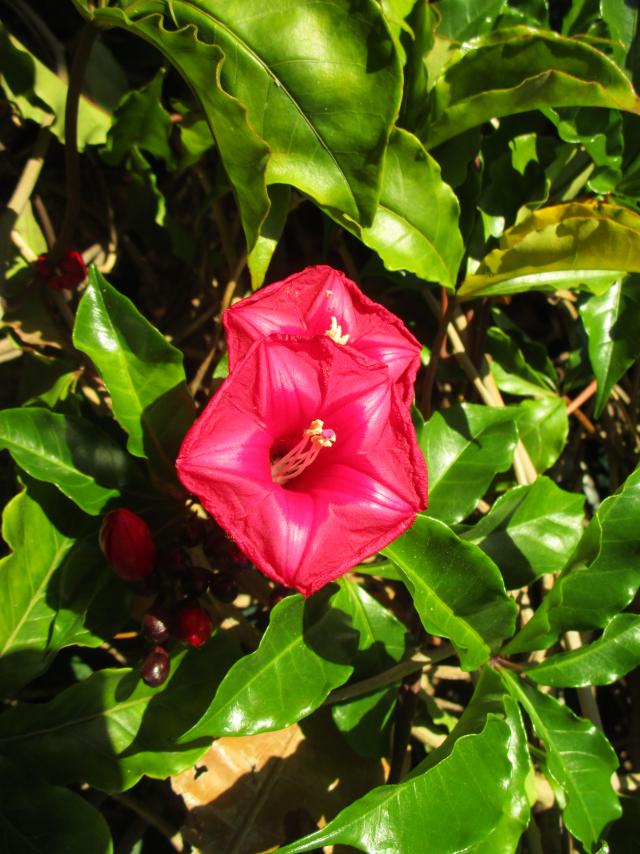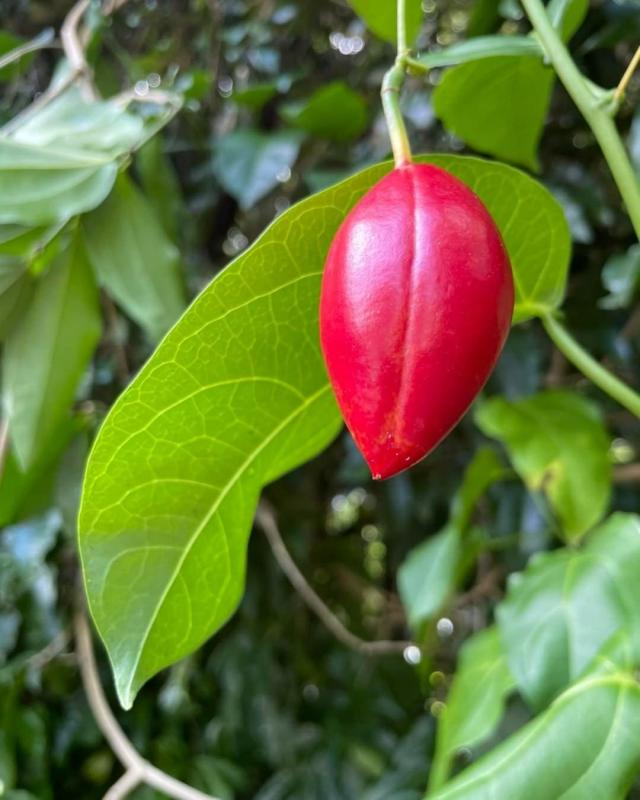One the most useful types of plants used in the garden would have to be the creeper. Many creepers also provide flowers or fruit that can attract birds or butterflies to the garden.
In Far North Queensland a unique creeper is starting fruit. The Adenia heterophylla or Lacewing Vine is a large woody climber that is a host for the caterpillars of Red Lacewing, Glasswing and Cruiser Butterflies.
Small green to cream to yellow flowers will periodically occur from March to August. Then followed by very showy oblong shaped bright fruit that are poisonous. It is found in wetter rainforests and in beach forests throughout Far North Queensland including Cape York Peninsula.
Last week I was lucky enough to visit the Roma Street Parklands and Brisbane Botanic Gardens and just loved the way Autumn flowering creepers have been used in the Parks landscapes.
Autumn is a great time of the year to start planning your garden refurbishment. Whether it is a gap or open spot along your fence or you may have an untidy embankment. Using a fast growing creeper to fill in that space can be achieved quickly and easily.
On trellises in the Brisbane Botanic Gardens the Tecomanthe hillii or the Fraser Island Creeper was creating a lot of interest. Tecomanthe hillii is a vigorous twining creeper with dark green crinkled leaves. Large dark pink trumpet shaped flowers with a whitish throat occur in Spring and Autumn.
The flowers are 150mm long in bunches of eight to 12 on old wood of the creeper. Grows well on trees or on trellises in full sun or light shade in a well-watered position.
These are some of the other flowering creepers that the Roma Street Parklands and Brisbane Botanic Gardens had flowerings that would grow here.
Ipomoea horsfalliae or Cardinal Creeper is a Creeper that deserves to be planted in more Queensland gardens.
The Ipomoea is a fast-growing tropical Creeper for pergolas, growing along fences or walls or even as a trellis feature. The dense lush tropical foliage of the Ipomoea forms a visible contrast to the Creeper’s trumpet flowers. This attractive bloomer will become submerged in ruby red to magenta-violet flowers.
Pandorea jasminoides or Bower of Beauty is a vigorous evergreen twining climber with shiny dark green leaves. Throughout the year clusters of bell shaped pink flowers with maroon to mauve centres are produced. The Pandorea will attract a number of birds during flowering. It is ideal for most soils in full to filtered sun.
Passiflora racemosa or Cascading Passionflower is a beautiful evergreen vine with large oval shaped glossy green leaves that have a wavy edge. Throughout Summer and Autumn clusters of up to a dozen large hanging scarlet red flowers appear.
After flowering it will bear small deep green oblong edible fruit. Passiflora racemose grow in full sun or part shade with a tropical atmosphere. It can be used on a trellis or as a screen on a fence and even be grown in pots.
Podranea ricasoliana or Pink Trumpet Vine is a fast growing evergreen climber that can be grown as a bushy creeper, shrub or as a potted plant. This creeper will be covered in masses of large rich pink trumpet flowers with deeper pink and red striations in the throat. Podranea ricasoliana will attract birds and butterflies to the home garden.
It is suggested that after flowering can be pruned hard to 50mm from the main stem. Suitable for full sun to partly shade conditions and will tolerate dry Western environments.
Stephanotis floribunda is an evergreen twining climber that has an open habit. Clusters of sweet perfumed waxy, white tubular flowers appear from November to April. Stephanotis is one creeper that will always perform much better in a part shaded position with rich well-drained soil.
Thunbergia mysorensis is a hardy, woody-stemmed, evergreen climber with dark heavily veined green leaves. From Spring to Autumn this native of India produces spectacular large hanging clusters of yellow, red and brown flowers.
Thunbergia mysorensis is one of the best creepers for pergolas and can be trained on trellises; it can also be used as a hanging basket plant. It prefers a sunny well drained position with humus rich soil in full sun to part shade.
We are lucky in this region that we grow such a large range of hardy creepers.

